Introduction
Osteomyelitis is the bone infection that occurs due to the infection of bacteria in the bone. Infection is caused by the bacterium Staphylococcus aureus and other bacteria’s can also cause it. Germs usually infect into the body skin through open wounds and travel to the bone through the bloodstream. Sometimes it will get infected with other infected tissues of the body. Once the microbes infect the bone, the leukocytes from the body will destroy the microbial pathogens and this process release enzyme and this enzyme leads to loss of bone tissue. This reaction leads to a pus formation.
Osteomyelitis
Pus from damaged bone
The most common bones that affected by osteomyelitis are tibia, femur, humerus, vertebra, the maxilla, and the mandibular bone. In children, osteomyelitis occurs mostly in the long bones of the lower legs and the upper arms. while in adults it affects spine bones. People who have diabetes may also get osteomyelitis in their feet if they have foot ulcers. Early treatment is important to reduce the severity of the infection.
History
Osteomyelitis is the oldest disease. The oldest known evidence of osteomyelitis lies in the fractured spine of a dimetrodon Permian reptile, which was in existence 291 to 250 million years ago. Evidence for osteomyelitis found in the fossil record is studied by paleopathologists, specialists in ancient disease and injury. It has been reported in fossils of the large carnivorous dinosaur Allosaurus fragilis.
1773– Bromfield described as bone that “may become carious, first in its internal parts and that from external injury, as well as from a vitiated state of the animal fluids.” And it is termed the disease as “Abcessus in medulla”.
1831- Smith, named the disease as necrosis, to indicate the death of bone.
1844- Nelaton introduced the term “osteomyelitis”.
1940- Penicillin was introduced to cure acute osteomyelitis.
Epidemiology
Approximately 20% of adult cases of osteomyelitis are hematogenous, which is more common in males for unknown reasons.
The incidence of spinal osteomyelitis was estimated to be 1 in 450,000 in 2001. In subsequent years, however, the overall incidence of vertebral osteomyelitis is believed to have increased as a consequence of intravenous drug use, increasing age of the population, and higher rates of nosocomial infection due to intravascular devices and other instrumentation. The overall incidence of osteomyelitis is higher in developing countries.
Types
There are two types of osteomyelitis include:
Acute osteomyelitis
This type has two categories such as:
Haematogenous osteomyelitis: In this type, the infection occurs via the bloodstream or infection in the blood. The bacteria are stuck in the rich area of blood supply so that the infection tends to spread the growing parts at the end of the long bones. Children are at increased risk.
Direct inoculation osteomyelitis: infection occurs directly to the bone due to injury, surgery or trauma.
Chronic osteomyelitis
This condition occurs when the treatment fails for acute osteomyelitis and it recurs for a long time. In many cases, chronic osteomyelitis may also occur due to the invasion of two or three microbes
Risk factors of Osteomyelitis
Some of the risk factors that may cause osteomyelitis include:
- Diabetes foot ulcers
- Weak immune system
- Injury to the skin
- Bone implant surgery
- Through hemodialysis, infection may cause osteomyelitis
- Long-term use of steroids
- Poor blood supply
- Illegal drugs that are injected intravenous
- Poor blood supply
Causes
It can be caused by various conditions and variety of microorganisms, including:
- The most common microorganism that causes osteomyelitis is Staphylococcus aureus
- An open injury that is caused by the bone piercing the skin
- Blood clot around the bone due to trauma, that can cause infection from seeding of bacteria
- Infection from somewhere else in the body that spreads to the bone through the bloodstream such as bacteremia, sepsis, pneumonia or a urinary infection
- A chronic infection or wound on the skin or soft tissue can spread it to the bone surface, that leads to secondary bone infection
- Bacteria in the bloodstream form biofilm in the local area of the bone and leads to the destruction of the bone. It mostly occurs during the bone implant surgery
Symptoms of Osteomyelitis
Symptoms of osteomyelitis vary greatly in children and adults. In children, symptoms occur immediately after the infection of the bone. Usually, the first symptoms appear in both adults and children are a pain in the infected area. Other symptoms that are common in osteomyelitis are as follows.
- Redness and warmth at the infected location
- Local swelling and pain
- Tenderness over the affected bone
- Inability to use the infected limb
- Struggle in bearing weight because of severe pain
- Fever and chills
- Feeling fractious and discomfort or ill feeling
- Stiffness and nausea
- Excessive sweating
- Open wound may drain out pus
Complications that arise during osteomyelitis
- Infection spreads around the site
- Septicemia (Blood poisoning)
- Cellulitis (Soft tissue inflammation)
- Bone death or bone necrosis
- Bone abscess
- Chronic infection, which may not respond to the treatment if individuals are affected by HIV, severe diabetes, and weakened the immune system.
- Amputation
- Vascular insufficiency in the case of infection at the lower limb bones
Diagnosis and Test
Physical examination: Your doctor will a perform the physical exam in the body to check for redness, swelling, pain, discoloration, and drainage of pus from the affected area.
Blood test: If osteomyelitis is suspected, a blood test is first performed to find any changes in the blood. Because high levels of WBC cause infection, it also might be the cause of bone infection. Complete blood count (CBC), erythrocyte sedimentation rate (ESR), and C-reactive protein (CRP) are also included in a blood test but they are not specific tests for osteomyelitis. They are just suggested to find some other infection in the body.
Blood culture: The microorganism that is infected with the blood is identified by blood culture.
Bone tissue biopsy: A small tissue is removed from the infected bone to check which pathogen causes the infection. This helps to choose a particular antibiotic to treat the germs that caused osteomyelitis.
A surgeon inserts a long needle into the bone through the skin to remove a biopsy under a local anesthesia. X-ray and other imaging techniques are used for guidance during the biopsy procedure.
Imaging studies
Bone scan: It is a test which reveals the metabolic and cellular activity of bones. During this scan a radioactive substance is injected into the body, to highlight the bone tissue. This helps to identify the location of the affected bone. If this scan is not giving you an exact result, then further high-efficiency scans such as X-ray, MRI, and CT are used.
X-ray: X-ray is a quiet and simple technique can identify the exact problem of the bone. It shows the appropriate location of the infection.
MRI: MRI scan produces detailed images of the bones and soft tissues that surrounded them.
CT: CT images are obtained by combining X-ray images that are taken at different angles and to create a cross-sectional image of patient’s internal organs.
Treatment and Medications
Antibiotic therapy
Initially, antibiotics are used to reduce the infection around the bone. Antibiotics are given through the intravenous (IV) for at least 4 – 6 weeks. More than two antibiotics are given at the same time. The type of antibiotics to be used is depending upon the type of infected pathogen. During the antibiotic therapy, the patient is to be hospitalized. The below table represents the antibiotics used for appropriate pathogenic organisms.
| Organism | Preferred antibiotics | Alternative antibiotics |
| Escherichia coli | Ticarcillin/clavulanate, 3.1 g IV every 4 hours.
Piperacillin/tazobactam (Zosyn), 3.375 g IV every 6 hours |
Ceftriaxone, 2 g IV every 24 hours |
| Pseudomonas aeruginosa | Cefepime, 2 g IV every 8 to 12 hours, plus ciprofloxacin, 400 mg IV every 8 to 12 hours
Piperacillin/tazobactam, 3.375 g IV every 6 hours, plus ciprofloxacin, 400 mg IV every 12 hours |
Imipenem/cilastatin (Primaxin), 1 g IV every 8 hours, plus aminoglycoside |
| Staphylococcus aureus | Vancomycin, 1 g IV every 12 hours | Trimethoprim/sulfamethoxazole (Bactrim, Septra), 1 double-strength tablet every 12 hours |
| Streptococcus species | Penicillin G, 2 to 4 million units IV every 4 hours | Ceftriaxone, 2 g IV every 24 hours
Clindamycin, 600 mg IV every 6 hours |
Suppose if the antibiotic therapy is not responding, then surgery is the final decision to save from spreading of pathogens into the surrounding environment.
Sometimes pain-killing medications are used to reduce the pain that is developed during the infection.
Surgery
For the chronic form of osteomyelitis, surgery is needed to get recover from the infection. Following procedures are used for treating osteomyelitis.
- Draining: The surgeon makes draining of the pus that filled around the bone by a small incision.
- Debridement: The surgeon removes the necrotic bone and also the infected tissue that surrounds the bone to avoid the spreading of infection.
- Vascularisation: The gap left after the debridement is filled with a piece of synthetic bone cement (Calcium phosphate) or skin or muscle from the other parts of the body. This restores the blood flow to the entire bone. The graft helps to repair the damaged blood vessels and forms a new bone.
- Removal of foreign objects: During the previous surgery some of the foreign objects such as screws, plates, and rods are placed. Those objects are tending to form infection and so they are removed by surgery in order to avoid spreading infection.
- Amputation: If the patient has diabetes it is not possible to cure the infection. In this case, the patient’s limbs are removed surgically to stop from spreading into other parts of the body.
Prevention of Osteomyelitis
- It is very much important to look after even for a small wound and cuts by thorough washing and cleaning with water. After cleaning the wound it is must to apply suitable antibiotics.
- If your wound or any injury is not healing for long period immediately contact a doctor to examine.
- Use proper footwear and protective aids during your sports activity to avoid injuries.
- Give a prompt medical attention to your allergies and any infections on your skin.
- Lifestyle changes, such as quitting cigarettes to improve blood circulation to the bone. Thereby preventing foreign pathogens from entering into the bone.
 Diseases Treatments Dictionary This is complete solution to read all diseases treatments Which covers Prevention, Causes, Symptoms, Medical Terms, Drugs, Prescription, Natural Remedies with cures and Treatments. Most of the common diseases were listed in names, split with categories.
Diseases Treatments Dictionary This is complete solution to read all diseases treatments Which covers Prevention, Causes, Symptoms, Medical Terms, Drugs, Prescription, Natural Remedies with cures and Treatments. Most of the common diseases were listed in names, split with categories.

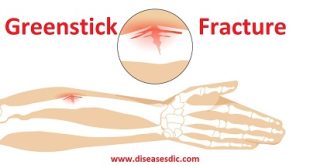
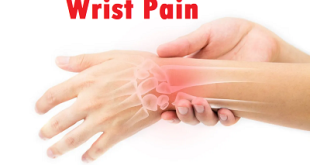
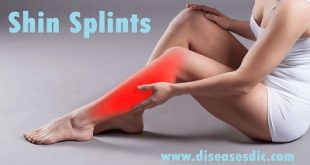
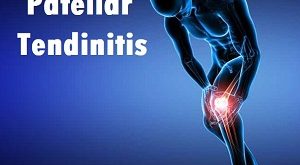
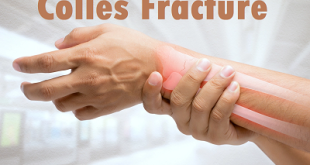
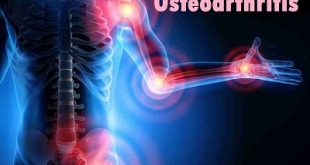

Thanks for this.am a patient with chronic osteomyelitis,still trying to raise money for the last surgery.
Thanks for this,am a patient with chronic osteomyelitis,am trying to raise funds to undergo surgery.really am grateful for this update.
osteomyelitis has to be prevented, diagnosed early and treated enthusiastically promptly for adequate duration has been emphasised. Thanks for the thoroughness in- hand information.
Thank you sir.
need to add classification and surgical management in broad content
Sure we will consider your suggestions and will update soon. Thank you.
Dear Sir,
Thanks for treatment bit I have one question
I have a patient which have lost 70 persent mass of leg in accident and have fracture then we have fixed foran body means mass from one leg to other leg and now I am dressing the leg so what kind of antibiotic should be used for these kinds of wounds
Note the antibiotics given in the post.
thank for your explanations,may i know the various types of antibiotics that can effective for the treatment
Please check the table given in the post.there listed some antibiotics used for osteomyelitis.
what about the way that the staph comeing to there
It can invade through an open wound and travel to the bone.
During any orthopaedic surgery unknowingly staph from the surrounding environment can get into the bone directly.
very educational and helpfull I have
treated one of my patient successfully with clindamycin. thanks
how does the TB bone affects people?
The TB causing mycobacterium passes through the bloodstream and reach into the blood vessels of bone. Direct spread to bone from adjacent tuberculous lymphadenitis lead to TB bone
does this have any connection with avascular necrosis Perthes disease
No. Osteomylitus is due to the bacterial infection and avascular necrosis is due to the inadequate blood supply
my leg is being pain me Na it have reach five years and I don’t know what to doe please help me out
consult a doctor to get cure of this problem.
not show all bone disease eg. sprail strain etc.
sure very soon we will update on our blog.
oesteomilitis I have illness
please consult a doctor.
I always a sharp pain in the right side of my left knee.when ever i stretch my left leg forward, i don’t feel any pain in the right side of my left knee.But when ever i bent my left knee,i feel this sharp pain if i touches the right side of my left knee and could feel a swelling at that place………..
what’s actually causes that pain n swelling.
Consult a doctor to get relief from leg pain.
I have an wound for so long time ago and it doesn’t heal,, which antibiotic should I use to cure it,,,, please I need you to help me.
cephalosporin
Bacitracin, Neosporin, Polysporin
What if the affected leg is not equal to the other leg can a surgery make it equal
Yes, it can be corrected through a surgery.
due to osteomylites my knee is block I can’t move . . plz suggest
Please consult a doctor to get rid of the problem.